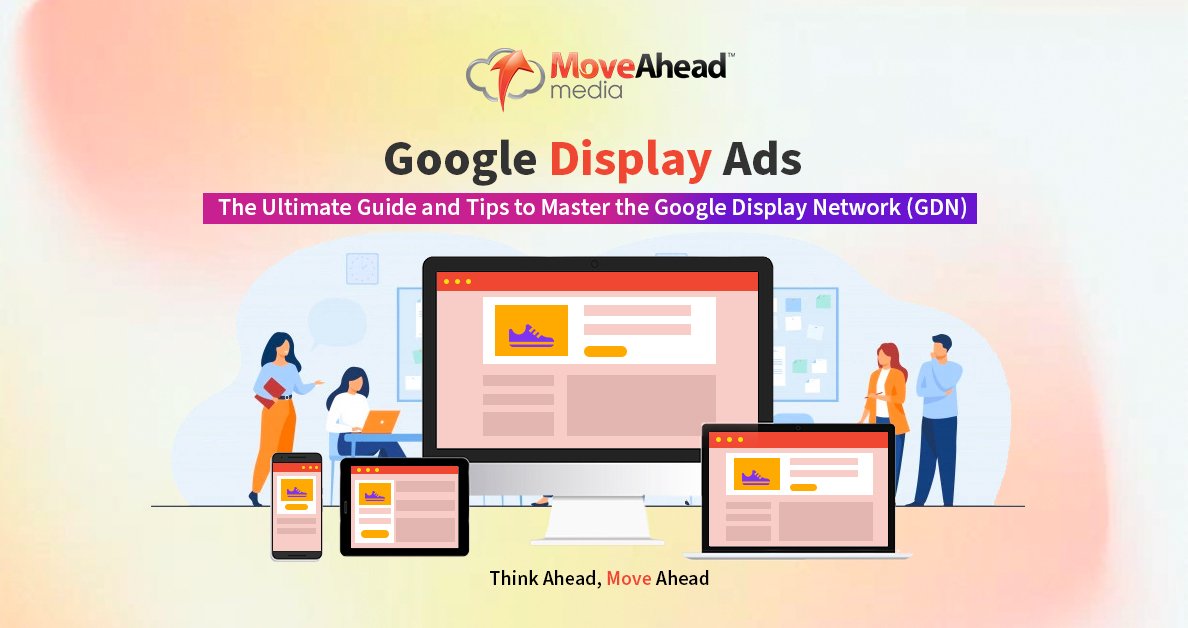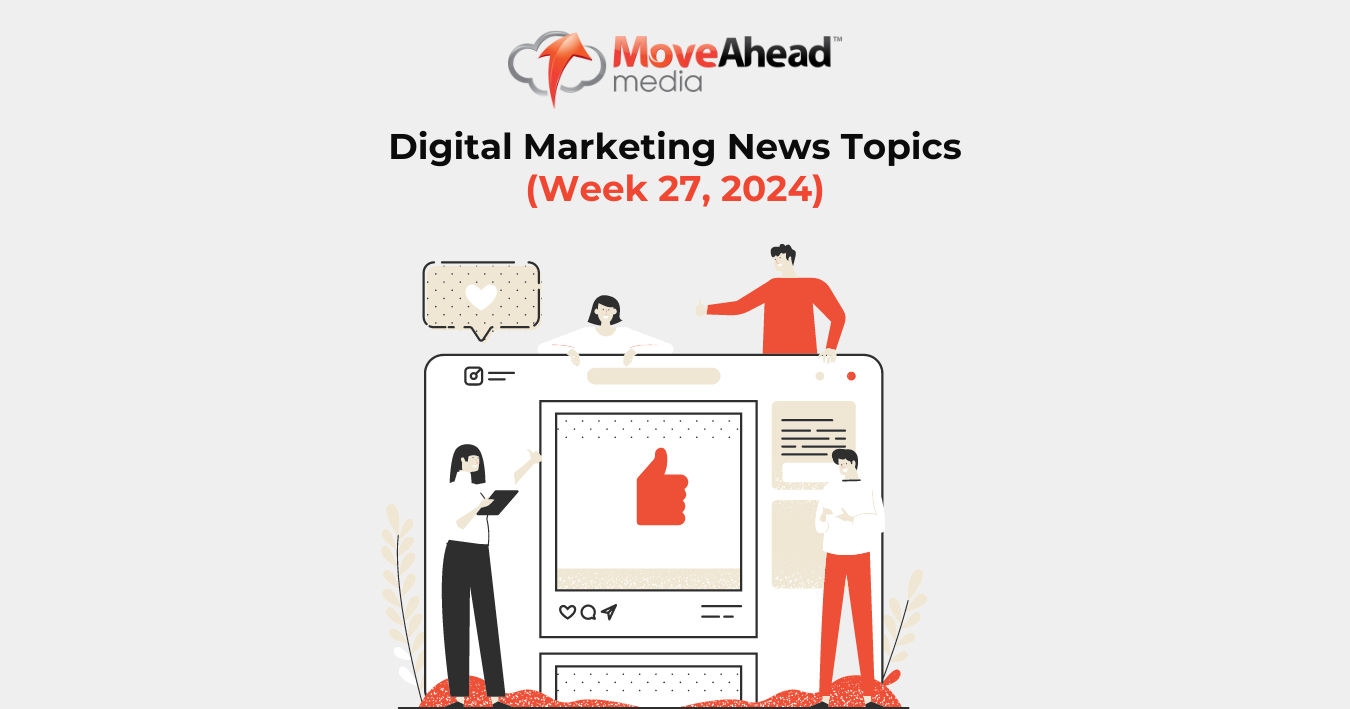
Google Display Ads: The Ultimate Guide and Tips to Master the Google Display Network (GDN)
Contents
- 1 What is Google Display Advertising?
- 2 What is the Google Display Network?
- 3 Where do Display Ads Google appear?
- 4 What are the types of Display Ads Google?
- 5 Why should you advertise on Google display?
- 6 How do Google display ads work and how to create them?
- 7 Get Started and use the display to drive results🚀
The Google Display Network (GDN) is Google’s largest ad network and can be a great tool to boost your company’s online presence. It can be an incredible source of revenue if done right but it’s not always easy to get the most out of it. There are so many opportunities within this advertising network that sometimes it’s hard to know where to start or what to do next. That’s why we created this guide with advice, tips and strategies on how you can master the Display Ads in GDN – Google Display Network!
This Blog Proves The Ultimate Guide To Mastering The Google Display Network and Display Ads Google.
What is Google Display Advertising?
Google Display Advertising is graphic advertising on Internet websites, apps or social media through banners or other advertising formats made of text, images, flash, video, and audio. The main purpose of display advertising is to deliver general advertisements and brand messages to site visitors.

What is the Google Display Network?
The Google Display Network is a large ad network consisting of over 2 million websites that reach 90% of internet users. As well as many targeting options that let you show your ads strategically at specific places or times, finding potential customers on millions of websites, news pages, blogs and other sites like Gmail or YouTube. The networks ads are shown on these websites and are targeted at the individual user based on things like their interest, location, devices, gender and age.
Where do Display Ads Google appear?
You can also choose to show your ads to people as they browse the web. Your text, image, and video ads can appear on the Google Display Network.
The Display Network is a collection of websites—including specific Google websites like Google Finance, Gmail, Blogger, and YouTube—that show ads. This network also includes mobile sites and apps.
Your ads can appear on websites based on the targeting methods you choose. On the Display Network, there are several ways to target your ads:
- Choose keywords and topics related to what your offer
- Choose specific websites or pages
- Choose specific audiences based on their interests, demographics, or whether they’ve visited your website before.

What are the types of Display Ads Google?
Display ads provide opportunities to engage users with appealing ad formats. Here are some of the ad types you can run on the Display Network: Responsive Display Ads.
Uploaded Display ads
With uploaded display ads, you can upload images in many ads sizes.
Responsive Display ads + Video ads
With responsive display ads, you can upload your assets (logos, images, headlines, descriptions, and videos), and Google will automatically generate ad combinations for websites, apps, YouTube, and Gmail.

Why should you advertise on Google display?
Benefits of Display Advertising
- Display ads are eye-catching and visually appealing. Display ads include a headline, text, and URL; they also feature graphics or video. Display advertising allows bran the most common methods to go beyond character counts with catchy messaging that features branding elements like logos or colours.
- Your intended audience will become more familiar with your brand and you’ll have a better idea of how your audience will perceive you. These ads can be found on websites that your potential customers frequent and increase brand awareness by 21%. Digital display campaigns through the Google Display Network (GDN) will place you in front of a targeted global audience who has an interest in what you have to offer.
- On the internet. Once potential customers know about your product or service, well-placed display ads can remind them to make purchases.
- It is cost-effective. Display advertising is more cost-effective than other forms of traditional ads. It has various pricing options and low costs, including Cost Per Impression (CPM) and Cost Per Click (CPC). CPC is more popular since you only have to pay for each person that clicks on your ad
- They allow for remarketing opportunities. Remarketing allows your business to position targeted ads in front of a defined audience that has previously visited your website as they browse elsewhere rather than per impression. Overall, both payment methods are much cheaper compared to television or print media advertisements so it’s a great option if you want some exposure online but don’t necessarily need the highest quality service for your money
How do Google display ads work and how to create them?
Google display ads rely on data from signed-in users to keep track of the websites and searches they make. These cookies are signals that Google uses to help advertisers reach their target audiences.
Creating an ad with Google Display is a relatively simple process. You can upload your images and text, or create them from scratch on the fly. The only requirement is that you have a Google Ads account to publish it. In the section below we will walk you through how to create and manage a Google Display Campaign in three easy steps: 1) Choose Your Audience, 2) Create Your Ad, 3) Manage Your Campaigns

Target Audience for Display campaigns
You can target and reach people based on who they are, their interests and habits, what they’re actively researching, or how they’ve interacted with your business. Audience segment targeting can boost your campaign’s performance by reaching people browsing websites, using apps, or watching videos.
1. In-Market Audience
In-market audiences allow you to find customers who are actively considering buying something like what you offer as they research products or services across the web.
2. Affinity Audience
Affinity audiences allow you to reach users based on what they’re passionate about and their habits, interests, and interactions.
3. Custom Affinity Audiences
Custom affinity audiences allow your business to define an audience specifically tailored by interest keywords, URLs and apps that you input. This means your ad can show up on sites related to your business, or to users who match the specific criteria that you’ve specified
4. Placement Targeting
When using placements targeting for your ad, you can target specific websites or pages on the site. So that you can show your ads to users who are looking for your products or services. For example, if someone searches “houses” on the Google search engine results page (SERP), then they might see ads promoting houses that are relevant to their interests by companies like Zillow and Redfin who use placement targeting.
Select the right customers based on demographics
In addition to targeting customers based on interests, you can also target them by characteristics such as demographics. This includes:
– Age: “18-24,” “25-34,” “35-44,” “45-54,” “55-64,” “65 or more,” and “Unknown”
– Gender: “Female,” “Male,” and “Unknown”
– Parental status: “Parent,” “Not a Parent,” and “Unknown”
Select the right devices
If the app doesn’t experience a good user experience for all users then it may be appropriate to delete it entirely. Could my service/product be easily used with an existing tablet? If your company produces games or apps then Mobile may be the perfect solution, however as a commercial software company it could make mobile tracking costly and unnecessary. Using laptops or smaller phones targeting could be costliest or unnecessary say a publisher on a new ad for. If your product or service can’t be used on tablets or small devices they might be dissimilar from what is being advertised.

5. Retargeting audiences for Display Campaigns
There are a few ways you can target these potential buyers with these cookies using Google display ads — the most common method is retargeting, wherein you show targeted posts toward potential customers who have visited your website before. Most people take it even further by segmenting this audience based on specific page views or how recently they visited your site as well!
Here are some examples of Retargeting audiences for Display campaigns
- All Users
Target users who have visited the site for a certain period of time. Such as All Users (seven days), All Users (14 days), All Users (30 days) or All users for all time.
- New Users
Target users who are new to your site and have conducted only one session. This is a great way of targeting potential customers from those who may be on their path towards conversion.
- Returning Users
Target users who have visited your site or app already. This can be an effective way to re-engage with users who are already familiar with your brand but haven’t yet purchased.
- Users who visited a specific section of the site (e.g. /index.html, shirts, /cart/)
This option uses the contains match type. If the URI for a page, screen, or directory contains the text you enter here, then that is considered a match.
- Users who completed a goal conversion
Target users who have completed a micro-conversion like an email registration or a contact request.
- Users who completed a transaction
Target users who’ve previously made purchases to make a purchase again. This requires that you’ve set up eCommerce transaction tracking.

Campaign optimization and best practices
This guide offers display advertising best practices for connecting customers with relevant ads across the web. Learn tips on reaching the right audiences, choosing a message that will resonate most completely and optimize performance to get your ad seen!
- Check your conversion tracking tag. The data on conversions is critical, so make sure you’re tracking them accurately.
- Keeping search and display campaigns separate. This will give you more control of your marketing strategy. As Search and display ads reach consumers in different contexts, managing them separately allows you to optimize for those specific channels.
- Add view-through conversions. To see a more complete picture of the conversion path for all media touchpoints that led up your customer’s final destination.
- Re-engage past site visitors with remarketing. On average, consumers visit websites 6 times in the purchase process – don’t miss out on your chance to rebrand and convert them when they’re most likely buying!
- Add similar audiences to reach and target people who are most likely to be interested in your products, helping you find new prospective customers.
- Find more customers with keyword targeting and in-market audiences. Both can help you deliver new, qualified prospects that are highly likely to buy from your company!
- Use automatic targeting in display to drive more volume based on your performance goals.
- Use both responsive and image ads in multiple sizes and formats. On average, advertisers see 50% more conversions at a similar cost-per-action when they use both formats in comparison with just images alone!
- Apply an automated bid strategy. With an automated bid strategy, you can save time and improve performance.
- Exclude underperforming site categories and placements. Avoid content that your target audience isn’t likely to visit because the people who will come in contact with them are not your ideal customer base.
The Google Display Ads, Google Display Network is designed to help you find the right audience. It has a wide reach of 90% of internet users as well as many targeting options that let you show your ads strategically at specific places or times, finding potential customers on millions of websites, news pages, blogs and other sites like Gmail or YouTube.
Get Started and use the display to drive results🚀
Now that you’ve heard from the experts, jump on the Display Network and start expanding your reach! Your audience is waiting for a reason to buy.
If you’re not sure how GDN or Google Display Ads can fit into your marketing strategy yet it’s best to take advantage of one-on-one support from an Ads expert who can strategize with you about reaching your target market across this network made up of 90%+ users worldwide.
Contact Move Ahead Media Today For A Free Consultation!






